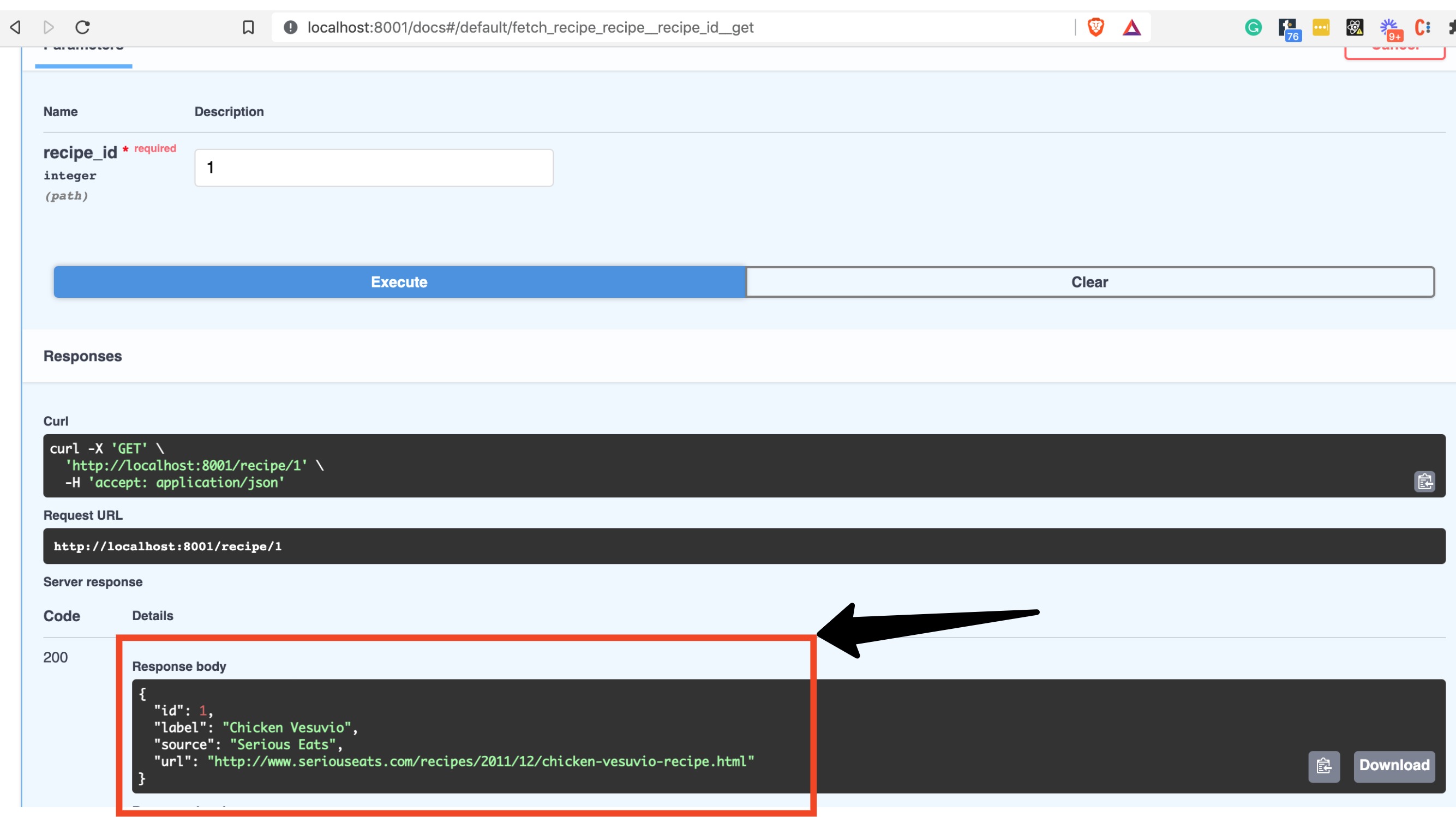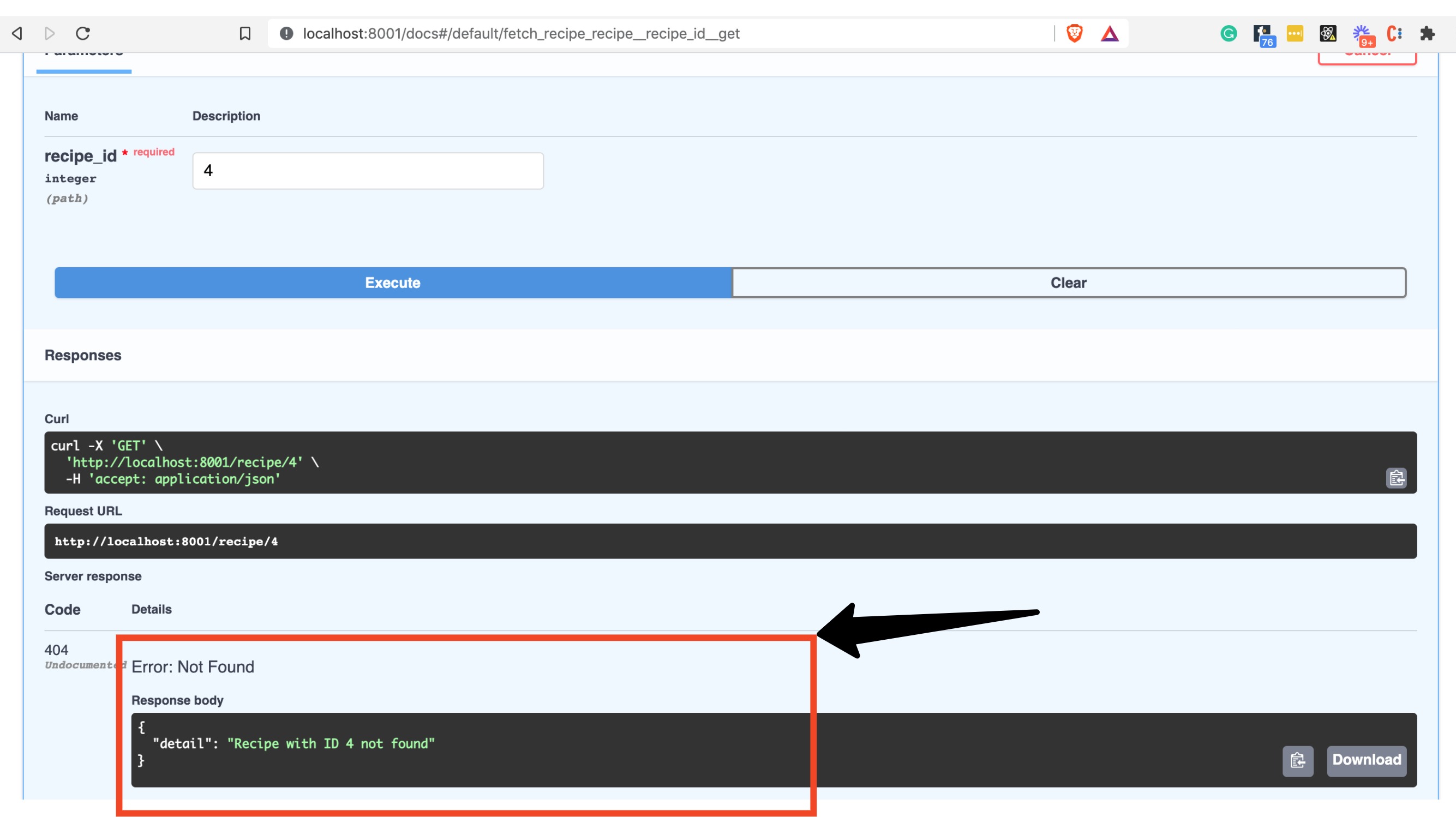The Ultimate FastAPI Tutorial Part 5 - Basic Error Handling
In part 5 of the FastAPI tutorial, we'll look at basic error handling
Introduction
Welcome to the Ultimate FastAPI tutorial series. This post is part 5. The series is a project-based tutorial where we will build a cooking recipe API. Each post gradually adds more complex functionality, showcasing the capabilities of FastAPI, ending with a realistic, production-ready API. The series is designed to be followed in order, but if you already know FastAPI you can jump to the relevant part.
Code
Project github repo directory for this part of the tutorial
Tutorial Series Contents
Optional Preamble: FastAPI vs. Flask
Beginner Level Difficulty
Part 1: Hello World
Part 2: URL Path Parameters & Type Hints
Part 3: Query Parameters
Part 4: Pydantic Schemas & Data Validation
Part 5: Basic Error Handling
Part 6: Jinja Templates
Part 6b: Basic FastAPI App Deployment on Linode
Intermediate Level Difficulty
Part 7: Setting up a Database with SQLAlchemy and its ORM
Part 8: Production app structure and API versioning
Part 9: Creating High Performance Asynchronous Logic via async def and await
Part 10: Authentication via JWT
Part 11: Dependency Injection and FastAPI Depends
Part 12: Setting Up A React Frontend
Part 13: Using Docker, Uvicorn and Gunicorn to Deploy Our App to Heroku
Part 14: Using Docker and Uvicorn to Deploy Our App to IaaS (Coming soon)
Part 15: Exploring the Open Source Starlette Toolbox - GraphQL (Coming soon)
Part 16: Alternative Backend/Python Framework Comparisons (i.e. Django) (Coming soon)
Post Contents
Practical Section - Adding Basic Error Handling

Practical Section - Adding Basic Error Handling
If you haven’t already, go ahead and clone the example project repo
See the README file for local setup.
In the app/main.py file, you will find the following new code:
from fastapi import FastAPI, APIRouter, Query, HTTPException # 1
# skipping...
@api_router.get("/recipe/{recipe_id}", status_code=200, response_model=Recipe)
def fetch_recipe(*, recipe_id: int) -> Any:
"""
Fetch a single recipe by ID
"""
result = [recipe for recipe in RECIPES if recipe["id"] == recipe_id]
if not result:
# the exception is raised, not returned - you will get a validation
# error otherwise.
# 2
raise HTTPException(
status_code=404, detail=f"Recipe with ID {recipe_id} not found"
)
return result[0]
# skipping...Let’s break this down:
- We import the
HTTPExceptionfrom FastAPI - Where no recipe is found, we raise an
HTTPExceptionpassing in astatus_codeof 404, which indicates the requested resource has not been found. See list of HTTP status codes.. Notice that weraisethe exception, we do not return it. Returning the exception causes a validation error.
Having done all that (and followed the README setup instructions), you can run
the code in the example repo with this command: poetry run ./run.sh
Navigate to localhost:8001/docs
Give the endpoint a try:
- Expand the GET
/recipe/{recipe_id}endpoint by clicking on it - Click on the “Try It Out” button
- Set the
recipe_idto 1 - Click “Execute”
You should get the “Chicken Vesuvio” response:

However, if you were to set the recipe_id to a non-existent one, say 4, then you will now
get a 404:

Exercise: Try POSTing to the /recipe endpoint to create a recipe with the ID 4 and then
retry your GET request (you should no longer get a 404). Remember that in our current app’s
basic form, created entries won’t be persisted after you CTRL+C and restart the server.
Continue Learning FastAPI
In the next part of the tutorial, we’ll cover serving HTML pages with Jinja2 templates.